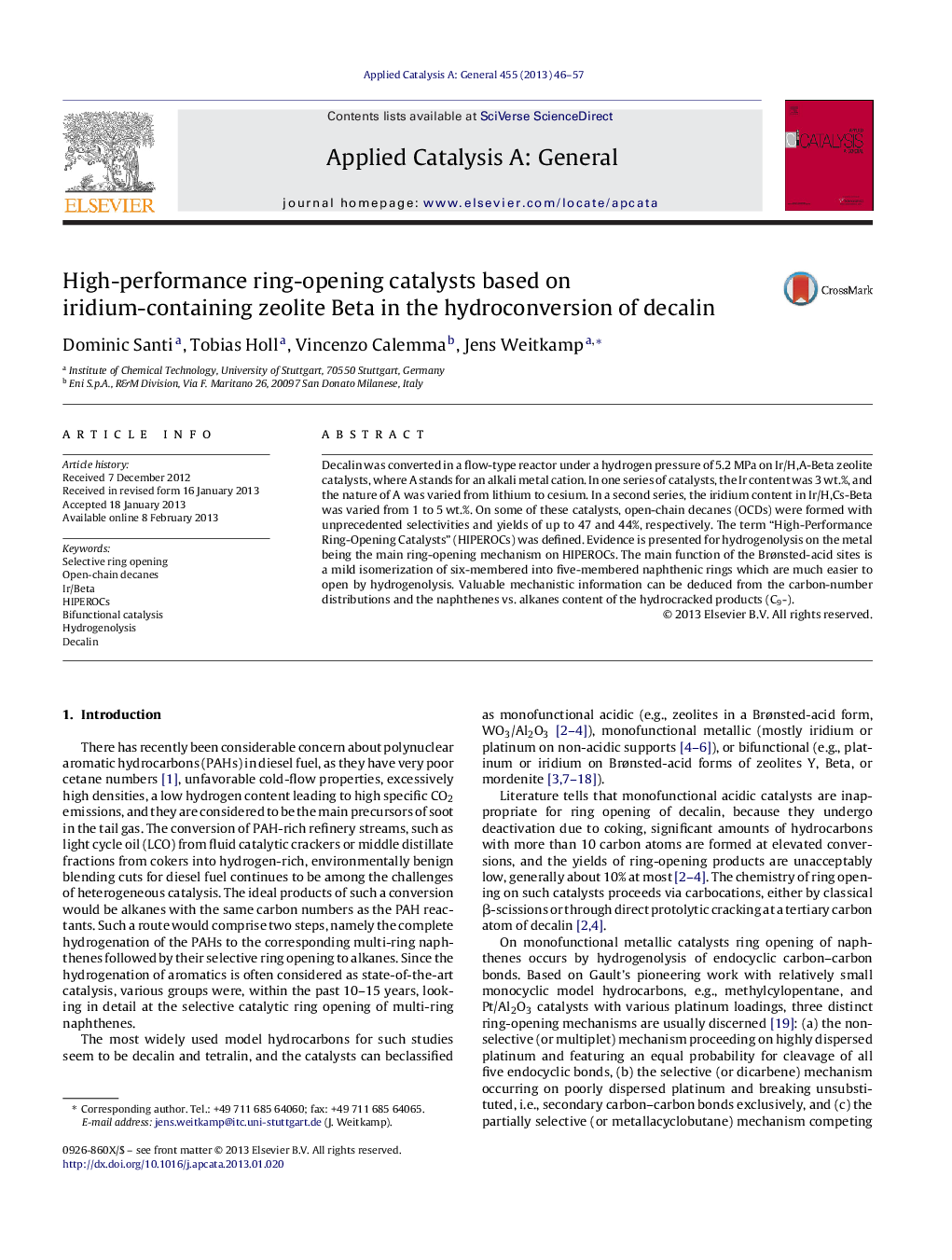| Article ID | Journal | Published Year | Pages | File Type |
|---|---|---|---|---|
| 40347 | Applied Catalysis A: General | 2013 | 12 Pages |
Decalin was converted in a flow-type reactor under a hydrogen pressure of 5.2 MPa on Ir/H,A-Beta zeolite catalysts, where A stands for an alkali metal cation. In one series of catalysts, the Ir content was 3 wt.%, and the nature of A was varied from lithium to cesium. In a second series, the iridium content in Ir/H,Cs-Beta was varied from 1 to 5 wt.%. On some of these catalysts, open-chain decanes (OCDs) were formed with unprecedented selectivities and yields of up to 47 and 44%, respectively. The term “High-Performance Ring-Opening Catalysts” (HIPEROCs) was defined. Evidence is presented for hydrogenolysis on the metal being the main ring-opening mechanism on HIPEROCs. The main function of the Brønsted-acid sites is a mild isomerization of six-membered into five-membered naphthenic rings which are much easier to open by hydrogenolysis. Valuable mechanistic information can be deduced from the carbon-number distributions and the naphthenes vs. alkanes content of the hydrocracked products (C9-).
Graphical abstractFigure optionsDownload full-size imageDownload high-quality image (177 K)Download as PowerPoint slideHighlights► Open-chain decanes were made from decalin with unprecedented yields up to 44%. ► The acid strength of the Ir/Beta catalyst was tuned by exchange with alkali cations. ► The term high-performance ring-opening catalysts (HIPEROCs) was introduced. ► The main mechanism of ring opening on HIPEROCs is hydrogenolysis on the metal. ► A detailed reaction scheme was advanced for selective ring opening on HIPEROCs.
